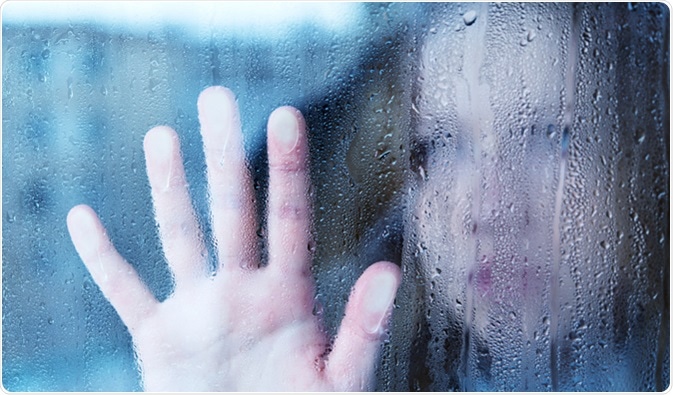what synthroid pills look like
Seasonal affective disorder (SAD) is a psychological condition in which individuals typically experience symptoms of depression during fall/winter months which remit during the spring/summer months. There are several proposed hypotheses put forward to explain the condition, as well as a range of effective treatment methods available to address the symptoms.

What is SAD?
Seasonal affective disorder is a psychological disorder characterized by major depressive episodes which occur and remit in specific seasons. The disorder includes a seasonal pattern specifier that has applications to recurrent major depressive disorder as well as bipolar I and II disorder as outlined by the Diagnostic and Statistical Manual of Mental Disorders. The depressive episodes usually recur in fall/winter months and remit or develop into mania or hypomania during the spring/summer months. In a select few cases, people with SAD will experience symptoms during the summer and feel better during winter.
Symptoms
Most individuals with the condition will present with some of the following symptoms:
- Continued low mood
- Irritability
- Feelings of despair, guilt and worthlessness
- Lack of energy
- Sleeping for longer periods than normal and difficulty waking up in the morning
- Weight gain and craving carbohydrates
- Marked loss of enjoyment in activities usually found enjoyable
Research has found that women and young adults are most likely to develop the disorder. Those who live further away from the equator and have a history of depression, SAD or bipolar disorder in their family are also more likely to develop the condition.
Diagnostic criteria for SAD
The tendency to experience seasonal variations in feeding behavior, energy levels, buy cheap revatio coupon no prescription social interactions and mood has been termed ‘seasonality’ and is often measured using the global seasonality score (GSS). To be diagnosed with SAD, seasonality must be present.
Some individuals may be exposed to psychosocial stressors associated with a season, resulting in a major depressive episode. It’s important to note that this does not qualify for the seasonal pattern specifier.
To establish a temporal seasonal relationship, medical professionals will be looking to identify two distinctive major depressive episodes in the past two years. Furthermore, the occurrence of seasonally linked depressive episodes must be greater than the number of non-seasonal major depressive episodes that the individual has experienced over their lifetime.
Comorbidity
Evaluation for comorbid psychological disorders must be considered during the diagnosis of SAD as it may coexist with several other mood disorders such as bipolar and cyclothymic disorders. Seasonality has also been found to exist in eating and anxiety disorders, which may further complicate the diagnosis.
Causes and theories of SAD
Most theories surrounding the cause of SAD explain it in terms of biological phenomena. Many consider the disorder to be a complex one, resulting from a combination of factors.
Serotonin and SAD
Serotonin is a neurotransmitter which plays a crucial role in many bodily processes including mood regulation. During winter months, serotonin levels tend to be at their lowest due to the lack of intense sunlight, and this can cause depressive symptoms.
Phase-shift hypothesis
The phase-shift hypothesis suggests that individuals with SAD have phase-delayed sleep-wake cycles compared to the cycle of light and darkness in the surroundings. This is associated with the delayed onset of sleep, changes in melatonin production and cortisol rhythms. Mood changes in winter have been found to be linked to phase-delays.
Photon-count hypothesis
The photon-count hypothesis proposes that shorter hours of less intense daylight during winter may cause insufficient light to reach the retina in individuals with SAD. Research has found a positive relationship between the severity of depressive symptoms and measures of light intensity in those with the disorder.
Genetic basis
Twin studies have demonstrated that there might be a genetic link between the onset of SAD. Research has found that genetics account for approximately 29% of the variance in seasonality experienced in those with SAD, including variation in mood.
Treatments for SAD
There is a range of treatment options for seasonal affective disorder. Research has found that all options are similarly effective. Therefore the choice of therapy may be guided by the patient’s preferences.
Light therapy
Exposure to cool-white fluorescent light by means of a special light box for a specified period may help improve SAD symptoms by reducing melatonin production and increasing serotonin production.
Cognitive behavioral therapy
Cognitive behavioral therapy (CBT) can be used to address negative thinking patterns and manage symptoms in those with SAD. A combination of CBT and light therapy has been found to be more effective than light therapy alone.
Drug therapy
Selective serotonin reuptake inhibitors and serotonin-norepinephrine reuptake inhibitors are often prescribed for patients with SAD in order to reduce the symptoms. In particular, fluoxetine and light therapy are thought to have similar levels of effectiveness.
Lifestyle changes
Lifestyle changes may be suggested to reduce the severity and onset of symptoms. Making adjustments such as increasing the amount of light in the home, spending more time outside and exercising can be extremely beneficial. Morning exercise, in particular, has been said to induce a phase-advance.
Sources
- Seasonal Affective Disorder: An Overview and Update: https://www.ncbi.nlm.nih.gov/pmc/articles/PMC3004726/
- Seasonal Affective Disorder (SAD): https://www.nhs.uk/conditions/seasonal-affective-disorder-sad/
- A polymorphism (5-HTTLPR) in the serotonin transporter promoter gene is associated with DSM-IV depression subtypes in seasonal affective disorder: https://www.nature.com/articles/4001392
- Seasonal Affective Disorder: http://medind.nic.in/iaa/t13/i12/iaat13i12p607.pdf
- Seasonal Affective Disorder: An Overview of Assessment and Treatment Approaches: https://www.ncbi.nlm.nih.gov/pmc/articles/PMC4673349/
- Genome-wide association study of seasonal affective disorder: https://www.ncbi.nlm.nih.gov/pmc/articles/PMC6138666/
Further Reading
- All Seasonal Affective Disorder (SAD) Content
- Seasonal Affective Disorder Treatment
- Natural Remedies for Seasonal Affective Disorder (SAD)
- Seasonal Affective Disorder (SAD) Causes, Symptoms and Diagnosis
- Genetics of Seasonal Affective Disorder
Last Updated: Feb 26, 2019
Source: Read Full Article
